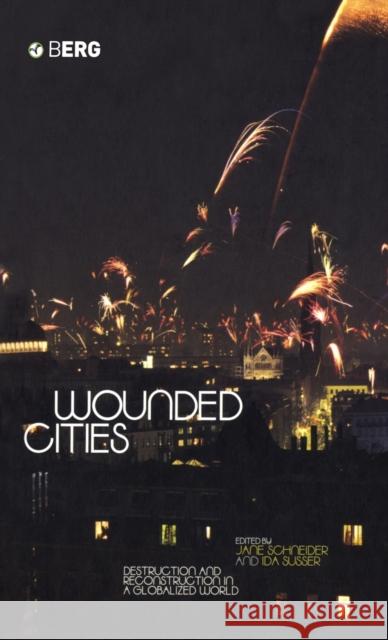Wounded Cities: Destruction and Reconstruction in a Globalized World » książka
Wounded Cities: Destruction and Reconstruction in a Globalized World
ISBN-13: 9781859736838 / Angielski / Twarda / 2003 / 256 str.
Wounded Cities: Destruction and Reconstruction in a Globalized World
ISBN-13: 9781859736838 / Angielski / Twarda / 2003 / 256 str.
(netto: 672,22 VAT: 5%)
Najniższa cena z 30 dni: 654,86
ok. 22 dni roboczych.
Darmowa dostawa!
Although the seemingly apocalyptic scale of the World Trade Center disaster continues to haunt people across the globe, it is only the most recent example of a city tragically wounded. Cities are, in fact, perpetually caught up in cycles of degeneration and renewal. As with the WTC, from time to time these cycles are severely ruptured by a sudden, unpredictable event. In the wake of recent terrorist activities, this timely book explores how urban populations are affected by 'wounds' inflicted through violence, civil wars, overbuilding, drug trafficking, and the collapse of infrastructures, as well as 'natural' disasters such as earthquakes. Mexico City, New York, Beirut, Belfast, Bangkok and Baghdad are just a few examples of cities riddled with problems that undermine, on a daily basis, the quality of urban life. What does it mean for urban dwellers when the infrastructure of a city collapses - transport, communication grids, heat, light, roads, water, and sanitation? What are the effects of foreign investment and huge construction projects on urban populations and how does this change the 'look' and character of a city? How does drug trafficking intersect with class, race, and gender, and what impact does it have on vulnerable urban communities? How do political corruption and mafia networks distort the built environment? Drawing on in-depth case studies from across the globe, this book answers these intriguing questions through its rigorous consideration of changing global and national contexts, social movements, and corrosive urban events. Adopting a 'grass roots up' approach, it places emphasis on people's experiences of uneven development and inequality, their engagement with memory in the face of continual change, and the relevance of political activism to bettering their lives. It is especially attentive to the historical interaction of particular cities with wider political and economic forces, as these interactions have shaped local governance over time. Imagining each city as a 'body politic', the authors consider its capacity both to mediate local conflict and to broach the healing of wounds.











